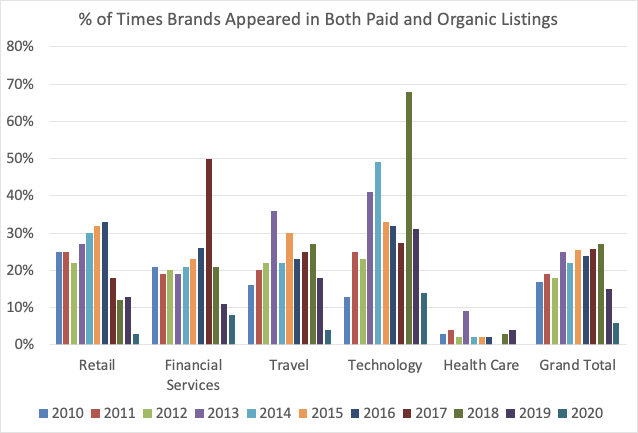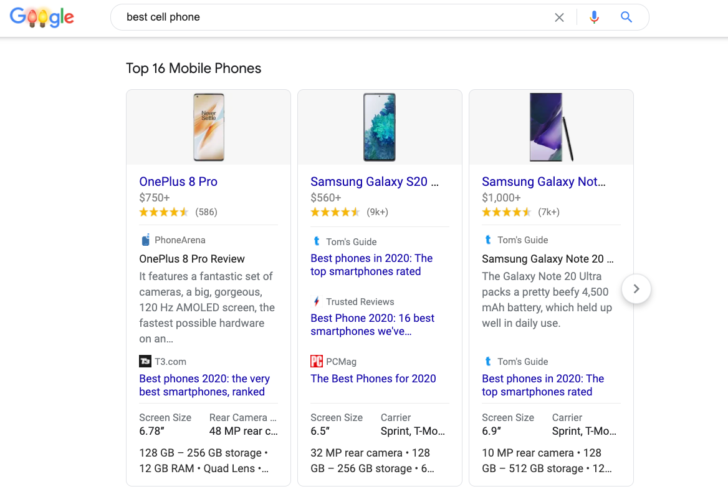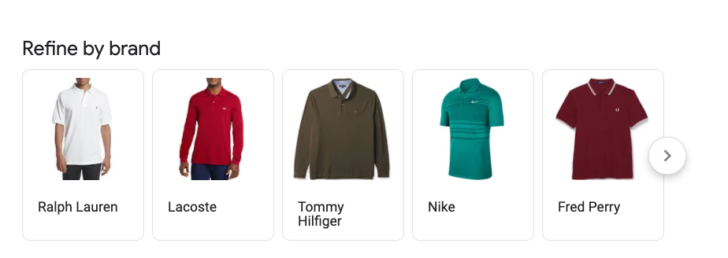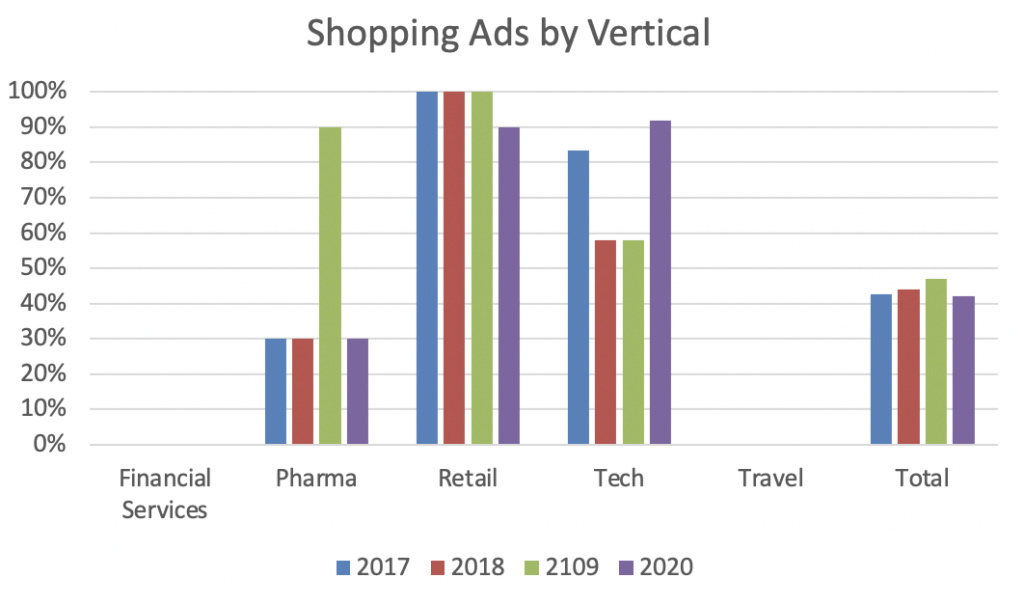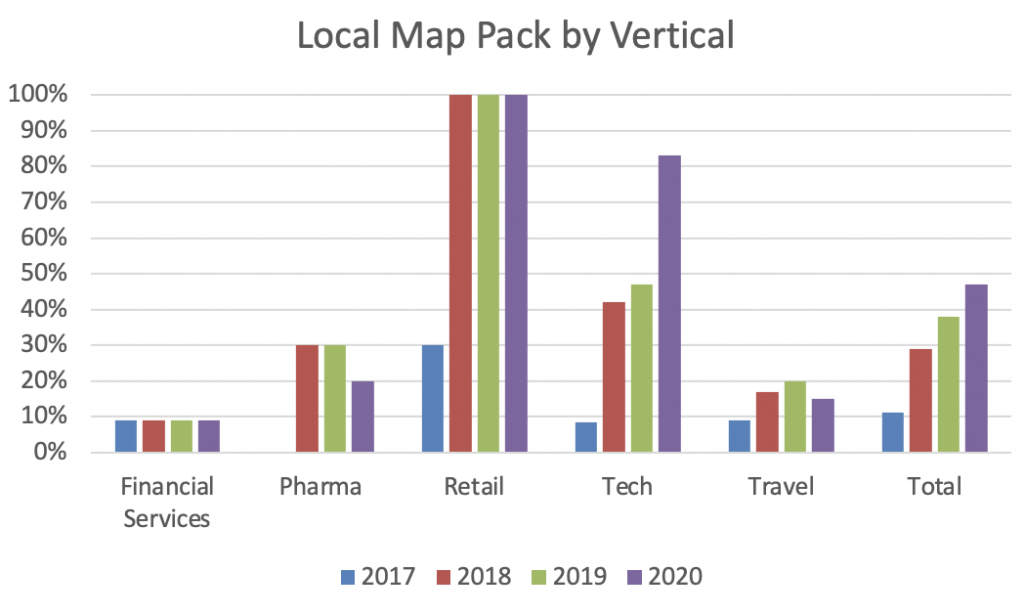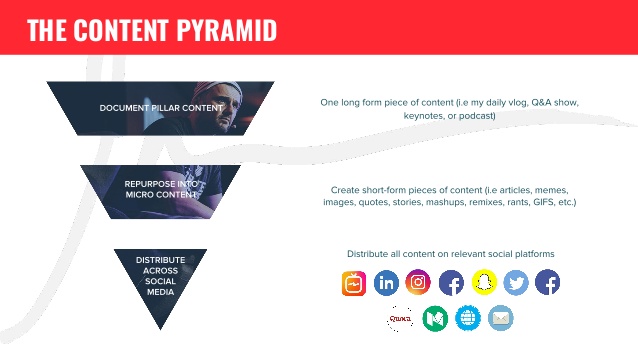How to use SEO for a great ABM strategy
30-second summary:
- Account-based marketing (ABM) helps build a personal bond with your target audience, assuring them that you understand their unique wants and needs
- ABM is considered the most financially successful marketing approach by 97 percent of businesses
- ABM can be used in conjunction with inbound marketing for maximum effectiveness, which ties into an effective SEO strategy
- Use SEO keywords to learn what your target audience is looking for and attract interest from all levels of a business
- SEO analytics – especially insights into consumer interests, behavior, and preferences – aid the construction of an effective account-based marketing strategy
Priorities in business marketing have drastically shifted in the online age. Throwing enough mud at the wall, hoping that at least some of it will stick, is now an outdated approach. Consumers are savvy, seeking to be wooed by products and services that meet their unique needs.
Naturally, this means that an effective marketing campaign will fish in shallow waters instead of casting a wide net into the ocean. Any business with serious intentions to capture a captive and loyal audience should take the account-based marketing (ABM) approach – and SEO can be essential to such a strategy.
What is account-based marketing (ABM)?
With so many different types of marketing packages available to businesses in 2022, it can be tricky to keep on top of all the different terminology. However, one of the most essential and successful modern approaches is account-based marketing (ABM).
ABM revolves around pinpointing a precise marketing target, such as a unique business – or even a department within a major company – and tailoring a promotional campaign, especially to them. In many cases, that involves breaking down your campaign step-by-step.
Let’s imagine that your business revolves around manufacturing protective cellphone covers. You may sell these covers to high street stores as generic items, but you feel that your business would be taken to the next level by teaming with a cellphone manufacturer. If you could get a contract with Samsung, for example, maybe your cellphone cover will be pushed as a must-have accessory to accompany the latest Galaxy handset.
In this instance, you would need to tailor a unique approach to exactly what Samsung are looking for in a collaborator. You cannot just send the same pitch that you would to Target, asking them to sell the item – a supermarket is just interested in whether they can buy cheap and sell higher, turning a profit on a product that is always in demand.
If you’re going to forge a long-term and successful relationship with Samsung, you’ll need to prove to them why your cellphone cover is the best on the market – better than your competitors, better than any other product the business currently uses, and how you’ll meet expectations going forward. All of this needs to be achieved through a marketing campaign that is impossible to ignore for your targeted account.
How does ABM benefit a business?
There are countless reasons to adopt an account-based marketing approach for your business. These include:
- Building a substantial profile of your target audience through extensive research, providing an invaluable platform
- Rapidly earning the trust of a client base, enhancing your chances of loyalty and a long-term working relationship
- Reducing wasted time spent on managing inappropriate or inefficient marketing leads
- A simple analysis of the performance and ROI of any campaign – the results will be comparatively black and white
- Keeping sales funnels tight – there will be no need to continually cajole and encourage consumers to complete their conversion as they are in the bag
- Enhanced reputation within your industry – you’ll earn a standing as a business that knows exactly what your audience wants
Notably, ABM is often very effective when aimed at global businesses that employ teams in multiple countries. These companies are often dealing with more complex supply chain issues, and are looking for a supplier who understands their needs and can be relied upon to meet them regularly. Prove your worth to such clients, and you’ll reap substantial financial rewards.
Is ABM the same as inbound marketing?
Account-based marketing is not quite the same as inbound marketing, but it could be considered a companion approach. If you’re going to make the most of ABM, keep at least one eye on your inbound marketing strategy.
For the uninitiated, inbound marketing involves laying bait for your potential consumers and waiting for them to come to you. We’ll shortly discuss how SEO aids ABM in greater detail, and inbound marketing will factor heavily into this. The online presence of your business, most notably blogs and social media accounts, will frequently be discovered through organic internet searches.
However, the core difference is that ABM is active whereas inbound marketing is passive. Both approaches involve appealing to the core interests of your target audience, but with ABM, you’ll be approaching the consumers in question. Let’s return to our example of creating cellphone protectors for Samsung products.
You could create content that will potentially attract their attention – blogs with titles like ‘This is the perfect protective barrier for a Galaxy S22’ and infographics on how and why your product will benefit users. This will take a long time to see results, though – and even then, you’ll need to ensure that the right employee from the right department at the right company gets in touch. ABM means reaching that employee yourself.
Overall, there is definitely a place for inbound and account-based marketing under the same umbrella – often working side by side. Both approaches will show potential consumers that you understand, and care about their interests. Just know that an ABM strategy is likelier to yield an immediate investment return. 97 percent of businesses claim to see greater results from ABM than any other marketing approach.
How to use SEO as part of an ABM strategy
We’ve buried the lede for long enough. It’s time to discuss how SEO can work in perfect harmony with ABM to create optimum campaigns that will yield business results. SEO and ABM share five fundamental links that should be embraced to see success. These learnings can be applied to any ABM campaign, no matter how large or small the client may be.
SEO performance reveals the core interests of your target audience
SEO and keywords are intrinsically linked – there is no getting away from that. This can benefit your ABM strategy, though. By focusing on the crux of your SEO strategy, you’ll gain an ever-greater insight into what your potential clients value most.
Understanding what keywords are performing best is critical to making the most of your SEO strategy – and, by extension, understanding who to target for an ABM campaign. Using Google Analytics, you can investigate how visitors to your site respond to keywords. If you’ve paid for a plum keyword, you’ll be expecting a conversion after a user interacts with it. Watch to see if users bounce from the page that is connected to the keyword or stick around and interact. Keep an eye on your Google Quality Score too, as this should be steadily improving with effective use of keywords.
If your keywords are failing to generate traction, this suggests they’re not as important to your target audience as you suspected. This suggests that your choice of keywords – and by extension, your macro and micro-copy – is not resonating with the specific needs of your target audience.
It’s better to learn this before you attempt to build an ABM campaign around inefficient keywords. You only get one chance to make a first impression, after all, and a reputation as an irrelevant offering is anathema to successful account-based marketing. Use SEO to practice and road test your use of keywords to perfect your choices – short- and long-tail alike – before approaching a potential ABM client.
If your keywords are performing, however, it’s all good news. You now have an idea of what seems to matter most to your audience. You can then bring these features into your ABM approach. If ‘free trial’ is performing well, you can write to a business offering an exclusive trial of a software package that lasts a month rather than the standard two weeks. Alternatively, if a particular adjective that describes your product or service gains traction, focus heavily on this when marketing.
Social media marketing is particularly effective once you have a core understanding of keyword performance. Once you know what keywords are likeliest to yield success, you can head to Facebook, Instagram, or LinkedIn and start applying PPC campaigns to business pages. This will go hand in hand with ABM, as social media campaigns will allow you to tailor your target audience and do all you can reach only the most receptive of eyes.
SEO opens doors to your target audience
It can sometimes be challenging to decide where to pitch a marketing campaign, especially in a B2B setting. It makes sense that you’ll try to win over the hearts and minds of decision-makers, as these are people that will ultimately control the purse strings of a company account.
Before building your ABM strategy around occupants of the C-Suite, remember that CEOs and financial controllers lack time to pore over the value proposition of a product or service. They’ll ultimately sign off on a purchase based on the recommendation of their staffing teams. Each of these employees will have different priorities based on their unique roles. This is where SEO comes into play.
Promises of free or discounted services will attract the interest of financial departments, who will welcome any opportunity to improve the bottom line of a business. Support and administrative staff will be more concerned with how the product or service will resolve any common pain points, especially if they’re labor-saving. Managers are likeliest to respond well to any promises of improved performance and higher productivity levels from their subordinates.
By addressing these varied priorities in your SEO strategy, you’ll attract the attention of a wide array of business employees. Launching an ABM strategy aimed straight at the head of a company after laying these foundations means that you’re much likelier to see success. If a business leader asks their team if they are familiar with your offering, they’ll respond positively.
If you can use SEO to pinpoint a particular individual or business interested in your offering, the world of ABM is your oyster. Imagine that you notice significant traffic from a local business, and their offering is aligned with what you are looking to market. Clearly, you are attracting the attention of this business. You need to reel in the catch, now that you have successfully baited the hook.
SEO generates new ABM leads
In an ideal world, you will identify your ABM targets early on and enjoy roaring success with every campaign. Sadly, none of us do business in a perfect world. It’s unlikely you’ll hit the bullseye every time, especially when starting with ABM. You’ll always need to keep at least one eye on your next campaign target.
If your business has a solid SEO strategy, you’ll be tracking a great deal of data – most notably, who is visiting your website and how they’re behaving once they arrive. This is where ABM and inbound marketing start to co-exist. If your content is piquing the curiosity of consumers or other businesses, build a profile of these visitors.
Is this aligned with what you consider your existing target audience to be? If not, you have a new stream of potential clients to aim an ABM approach to. Something about what you have to offer is attracting attention. Use Google Analytics to dig a little deeper into this – sign into your dimensions and metrics summaries, and review reports that summarize page views, bounce rates, and sessions durations. Use these analytics to learn what is attracting the greatest attention.
Once you have this data, you can identify where these visits are coming from (more on that anon) and start approaching potential leads for an ABM campaign. Your content marketing has already done most of the heavy lifting, and these SEO-generated leads are low-hanging fruit. Pluck them with your ABM approach, and turn this potential client into a returning, long-term client.
SEO reveals the buyer journey of your target audience
As discussed, SEO and ABM combine to identify the perfect buyer persona. However, getting in touch with the right person is only half the battle. You also need to understand how this individual prefers to complete a transaction. The average B2B purchase encompasses four stages.
| Awareness | Your product or service is discovered through SEO marketing, typically a Google search based on relevant keywords. This discovery could be organic or based on a pay-per-click campaign |
| Exploration | Interest piqued by your SEO content, the potential customer will look further into your offering – ideally sharing any blogs, videos, and infographics over social media |
| Comparison | Users will conduct further research into your product or service, comparing it to competitors. This is where you should strike with an effective ABM campaign – use what you have learned through SEO to convince the buyer that your business will meet their needs best |
| Conversion | Content that you understand their unique needs and desires, the customer completes a conversion – hopefully, the first of many in a long and fruitful working relationship |
Use SEO to learn how you can appeal to your target audience through these steps, reinforcing promises of trust, value for money, and exemplary performance throughout. That means reviewing where your core web traffic is coming from and building a profile of who is visiting. Is your site more popular with local searches, or do you appear to have an international audience? Is your traffic spread across the globe, or do you appear to be particularly popular in certain regions, such as Eastern Europe or Western Asia? What pages are attracting more clicks than others, and does this mean that you should shift your primary SEO focus and use different keywords? Take each of these learnings and apply them to your conversion funnel, tailoring the experience to what appears to be an increasingly promising set of leads.
SEO analytics provide insight into ABM campaigns
Above all, you should use the results of your Google Analytics to build a tailored, account-based marketing campaign that ticks every box for your potential buyer. This will offer the greatest chance of success for a conversion.
Now, your mileage will vary on what metrics merit the most significant investigation. Every business will have varying priorities, while disparate industries will also attract unique customer behaviors. Examples of analytics to embrace include:
- Does the user visit your website through a desktop computer or a mobile appliance? Should you develop an app and push this as part of your marketing approach, declaring it the most convenient way to do business?
- Which channel does the potential customer use most to visit and interact with you? Do they come to your site via Google, or are they spending more time on a particular social media platform? Focus your ABM energy on whichever channel appears to delight the user most
- Study user behavior once they are on your website. If they are spending prolonged periods on Page A and bouncing from Page B, you should tailor your ABM around the former – though consider adjusting the content of the latter (one more note)
Of course, knowing is only half the battle here. You’ll also need to take these educational opportunities and put them into practice. The first step of this creating audience clusters in Google Analytics and targeting different groups for different stages of the sales funnel.
In an ideal world, you’ll be able to use Google Analytics to identify regular visitors from a particular business. Sign into your Analytics account and select Audience, Technology then Network. From here, you can see the ISPs of who has been visiting your site – and with the aid of a little detective work (and, if we’re being realistic, a paid tool like Leadfeeder or something that suits your business best) you’ll uncover who has been visiting your site.
Let’s consider an ideal case scenario here, returning to our previous ABM business example. Imagine that you have clustered a group that spends several minutes at a time browsing your website, including the product pages, but never attempt to make a conversion. Research informs you that they all appear to be hailing from Samsung HQ in your country.
That sounds like you have the perfect lead-in for a targeted ABM campaign. You know that a number of people at Samsung know who you are, and what you do. This provides the ideal opportunity to introduce yourself as a business contact and seek to open a dialogue about how your two companies could work together.
Ultimately, SEO analytics are a goldmine for all marketing opportunities – including ABM. If effective SEO is the foundation of a successful business, consider account-based marketing the flair and finesse that helps you build and expand a business empire.
Joe Dawson is Director of strategic growth agency Creative.onl, based in the UK. He can be found on Twitter @jdwn.
Subscribe to the Search Engine Watch newsletter for insights on SEO, the search landscape, search marketing, digital marketing, leadership, podcasts, and more.
Join the conversation with us on LinkedIn and Twitter.
https://www.searchenginewatch.com/2022/04/07/how-to-use-seo-for-a-great-abm-strategy/




